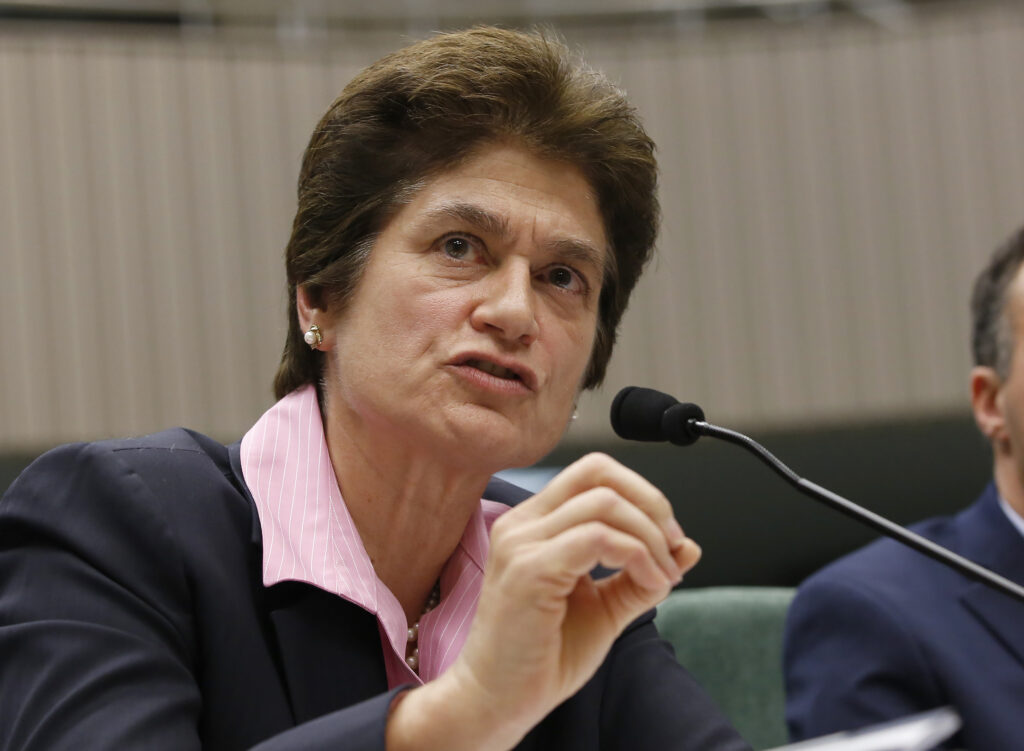The state auditor criticized the California Department of Education for inadequately monitoring $24 billion in federal Covid relief that is going to school districts and charter schools. Without better oversight, the department won’t know if districts are misapplying the money or wisely using the massive, unprecedented aid, California State Auditor Elaine Howle wrote in an audit released Tuesday.
The department “has not taken a strong leadership role” to ensure that districts are “effectively and promptly” using the money, Howle wrote. Because districts are not consistently filing regular spending reports as required, she said the department won’t be in a position to know if districts “are meeting the educational and safety needs of their students.”
Starting in May 2020, Congress passed three rounds of Covid assistance for K-12 schools, initially to pay for sanitary supplies and equipment, including personal protective equipment, air purifiers and coronavirus testing, as well as computers for students, to help districts get through the initial crisis. The later rounds include funding for districts to address the learning and social and emotional impacts of the pandemic.
Through the Elementary and Secondary School Emergency Relief Act and the Governor’s Emergency Education Relief Act, California was allotted $1.9 billion initially, an additional $7 billion in January 2021 and then $15 billion last May, which districts can spend through January 2025.
The audit said the department should play a stronger role in monitoring and advising districts on how to use the money. The department “in general has not taken a proactive approach,” it said. “It answers questions and provides technical assistance but indicated that it is not the authority” on how districts should use the money.
Among the findings, the audit found that:
- In 2021-21, the first year of funding, the department audited fewer than 1% of districts and charter schools — 15 of the more than 1,600 districts and charter schools — an inadequate number to determine compliance with federal requirements, the audit said;
- The number of districts that failed to submit mandated quarterly reports increased from September 2020 to March 2021. About 1 in 20 districts failed to file reports explaining how they used the data in early reporting. Since future quarterly reports will cover much more spending, particularly $15 billion in the latest and biggest installment through the American Rescue Plan, the audit called on the department to take steps to ensure it knows how the money will be used;
- The few audited districts listed 40% of their spending as “other activities.” Although some districts may have appropriately included some costs in this catchall category, other spending may be miscategorized or inappropriately spent. Nonetheless, the audit said, the department hasn’t focused attention on how this money was spent;
- As of June 30, nearly 90 districts and charter schools had spent less than 20% of the first round of federal funding, and more than 140 had spent less than 20% of the smaller amount they received through the Governor’s Emergency Education Relief Act. The auditor projected that as much as $160 million would revert to the federal government if the money hadn’t been spent by the spending deadlines.
The auditor recommended that the department track districts’ spending more closely and do outreach if they’re lagging in their spending and hire more staff for this purpose. In its response, the department agreed but said it’s already tracking the funding and is projecting that only two districts will spend less than 80% of their initial funding, at current rates of spending.
Howle wasn’t satisfied with that answer, however. “The department’s proposed actions are not consistent with those that we recommended,” she wrote. “In fact, the department did not provide us with any such analysis during our audit despite our requests that it do so.”
In another recommendation, the audit says the department should identify districts with the best and most efficient spending practices and spread the word so other districts maximize their use of the money. The department agreed, while asserting that it already does so by offering webinars that explain what’s permissible under the law.
The department disagreed with two other recommendations — that it should set a policy setting a minimum number of districts to monitor and that it should make it a priority to investigate those districts that categorize much of their spending as “other activities.”
The department’s policy on monitoring meets federal requirements, Chief Deputy Superintendent of Public Instruction Mary Nicely wrote in the department’s response to the audit. The 15 districts monitored in the first round, which included Los Angeles and Long Beach, covered 25% of the federal money. The state plans to monitor 50 more districts’ spending in the next round of funding, she said.
Howle wrote that her office stands by its recommendation. Considering the amount of funding under the American Rescue Plan, it’s important to set a clear policy on the number of districts it will monitor and adhere to it, she said.
As for focusing on the “other activities” spending, Nicely wrote that the department disagrees with the assumption that choosing that category implies money has been misspent. There are valid reasons for that selection, she said, and concentrating on that issue “would redirect our resources and prevent us from fully meeting our federal oversight responsibilities.”
“We are disappointed” with that rationale, Howle responded. The department doesn’t require districts to document the spending data they report, she said, adding that as a result, the department “lacks assurance” districts are spending the money the way the federal government intended.
To get more reports like this one, click here to sign up for EdSource’s no-cost daily email on latest developments in education.
